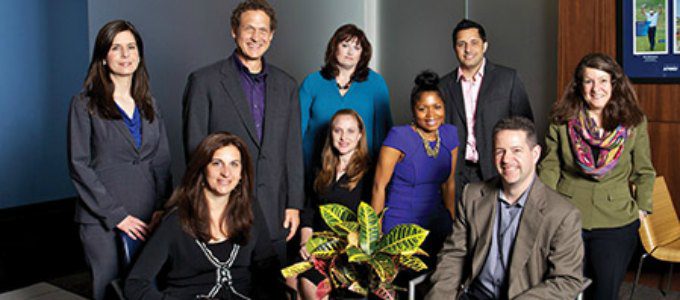
To benefit clients and staff, KPMG’s Business School program gives participants training in both job skills and industry changes.
by Kate Everson
June 11, 2014
Before PGA champion Phil Mickelson tees off, he has to think about what comes next. What’s his next shot going to be? What club is he going to have to use? How many putts will he need to make par or a birdie? Maybe it’s appropriate, then, that his cap is emblazoned with accounting firm KPMG’s logo.
Similar to the golfer it sponsors, the American tax, audit and advisory services firm is always looking toward the future. KPMG’s Business School’s learning strategy focuses on three goals: understanding the marketplace of the future, creating the firm of the future and developing the workforce of the future.
“It’s critical that we keep our people balanced and educated to be able to meet the changes of the workforce in the future and meet our clients’ needs,” said Cyndi Bruce, executive director of the KPMG Business School. This includes preparing employees with the skills they need for both short-term and long-term positions by focusing on innovation and change affecting the marketplace and the firm’s clients.
Their efforts haven’t gone unrewarded. One tactic used to accelerate employees’ productivity earlier is to give entry-level workers responsibilities usually held by higher positions. Bruce said this helps staff members master fundamental skills sooner and bring more knowledge and efficiency to the table, which in turn results in better-quality work and greater retention. KPMG’s workers have benefited, too — overall employee satisfaction scores increased from a 53 percent approval rating in 2003 to 82 percent in 2013.
Bruce and her staff use a blend of traditional training, social learning and on-demand training for a mobile workforce. The content focuses on both job skills and shifts in the industry. “Our people are our product,” she said. “It’s critical that we keep those people balanced and educated to meet the challenges of the workforce in the future and to serve our clients’ needs.”
Adopted in 2012, the three-mission strategy is the product of an evolving marketplace, Bruce said. As the marketplace comes back from the recession, various industries see new shifts. For example, manufacturing companies have started returning to the U.S. Understanding these changes is crucial to KPMG’s staff, who need to understand economic developments to provide the right guidance to their clients.
“The strategy of the firm evolves as the business and the complexity of the world we navigate in and our clients’ worlds continue to evolve,” Bruce said. “Our main focus is to stay aligned with the business and ensure that we’re supporting their strategy and objectives.”
Bruce’s department stays in sync with KPMG’s overarching goals by incorporating the top executives into the planning and development process. The chairman and vice chairman sponsor key programs by promoting current goals and messages, encouraging involvement and showing the value participants have to the firm.
Leadership contribution doesn’t stop after the development process, however. With the KPMG Business School serving roughly 25,000 employees, it would be a full-time job if top executives attended every session. But that doesn’t stop the chairman and vice chairman from attending as many sessions as they can and appearing at all others through messaging, videos and other methods. Bruce said this involvement ensures that senior executives understand the importance of learning programs when planning for the future.
The next step for the program revolves around mobile learning. Bruce said the company will continue to meet employees’ expectations and provide them with more ongoing flexible learning options, but also it will expand into new technologies “to reach our learners like we’ve never had the opportunity to do before.”
This includes using apps that compile agendas, speaker bios, contacts and question submission forms so attendees can continue the social networking aspect of training even after an event. The company also has installed a broadcast system that allows top-level executives to create videos and disseminate them to the company quickly. “That to me is the most significant way to stay ahead of the curve,” Bruce said. “To really take advantage of the tools and technology that are available to us and that our workforce is beginning to expect us to use as they become more technologically literate and mobile.”



